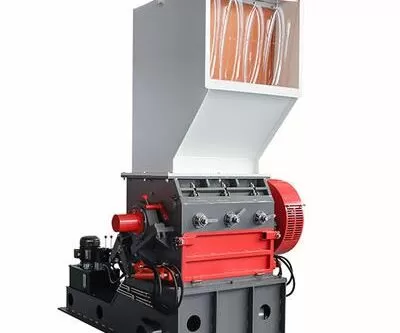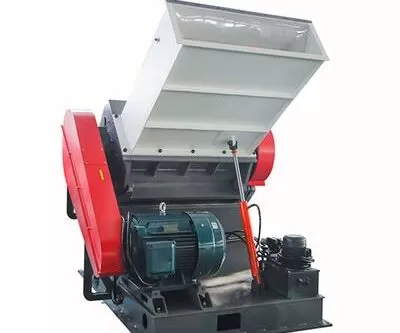Let’s be honest—traditional plastic crushing is about as exciting as watching paint dry. The machines are noisy, clunky, and more stubborn than a fax machine in 2025. But here’s the thing: while everyone’s going wild over AI, automation, and Industry 4.0, plastic recycling equipment has quietly joined the party. I’m talking about real-time sensors, remote diagnostics, and intelligent crushing systems that can basically think for themselves. The era of “smart crushers” is already here, and it’s changing everything.
Plastic crushing machines are rapidly integrating with smart technologies like IoT, AI-driven maintenance, load balancing, and remote monitoring. These advancements boost efficiency, reduce downtime, and enhance output quality. In short, they’re turning simple crushers into intelligent, data-powered systems—exactly what the automation era demands.
Crushing plastic might seem low-tech, but believe me, there’s a digital revolution shredding its way into our factories.

What is smart technology in the context of plastic crushing?
We’re not talking about teaching your shredder to play chess.
Smart tech in plastic crushing means machines equipped with:
- IoT sensors that monitor temperature, vibration, motor load.
- AI algorithms that predict breakdowns.
- Automated load optimization for consistent crushing speed.
- Cloud connectivity for remote diagnostics and performance tracking.
It’s like turning your crushing line into a Formula 1 pit crew. Fast, accurate, and always one step ahead of failure.
Factories using smart shredders report up to 40% less downtime and 25% higher throughput.
How does automation improve efficiency in plastic recycling?
Imagine your shredder calling in sick before it breaks down.
That’s what smart maintenance does. With predictive analytics, the system tells you when to oil, when to replace, and when to stop pushing the machine like a rented mule.
Smart systems can:
- Auto-adjust cutting speed based on plastic type.
- Identify contamination in the feedstock.
- Control feeding belts to avoid clogging or overloading.
- Balance energy usage during peak operation hours.
Less manual monitoring, fewer surprises, better ROI. Simple math, really.

What does integration with IoT really look like?
Here’s what it looks like from my control room (and yes, I feel like Tony Stark every time I log in):
- A dashboard showing real-time data from every machine.
- Alerts for temperature spikes, motor strain, or feedstock jams.
- Historical data showing trends in wear and tear.
- Remote switch-on and shutdown (a lifesaver when you forget the line’s still running after dinner).
You can manage your plant from your phone while sipping coffee. Or something stronger.
IoT isn’t just “nice to have.” It’s becoming expected if you want to stay competitive.
Are these smart crushers expensive?
Short answer? They used to be.
But not anymore. Smart integration has become modular. That means you can start small—with basic sensors and tracking—and scale up as your business grows.
Here’s what we’ve done at Amige:
- Started with motor load sensors and vibration monitoring.
- Added edge AI cameras to detect plastic types.
- Then, introduced a full PLC + IoT cloud dashboard.
Even better, most smart systems reduce long-term costs by preventing breakdowns. It predictive maintenance can save up to 30% in repair expenses annually.
And we’re not talking millions. A decent IoT package can start at just a few thousand bucks.
Can smart crushers adapt to different plastic types?
Oh yes, and this is where it gets spicy.
Old-school machines treat everything the same—whether it’s a milk jug or a garden chair. That’s just asking for trouble.
But smart crushers?
- Use AI-powered sorting systems.
- Adjust blade speed and torque based on input material.
- Detect and reject non-plastic or dangerous objects.
- Create data logs of how often each plastic type appears.
Imagine a system that knows whether you’re feeding it PET, HDPE, or ABS—and adjusts itself accordingly.
We recently deployed a line where the AI rejected a metal bottle cap before it hit the blades. I nearly cried.

How does this affect manpower and skill requirements?
It changes everything.
No more “guesswork technicians” hitting buttons randomly. Instead, we need:
- Tech-savvy operators
- Data analysts
- Maintenance pros who can read sensor logs
Sure, you still need people to load, clean, and manage the physical operations. But increasingly, a smart recycling facility looks more like a control center than a warehouse.
That’s why I always tell my crew: “Learn sensors now, or get left behind.”
At Amige, we’re offering to help partners upskill their teams—because a smart crusher deserves a smart crew.
What are the environmental and business benefits?
Smart machines aren’t just cool—they’re green and profitable.
Environmental wins:
- Reduced energy waste via load balancing.
- Better separation of plastic types, reducing contamination.
- Efficient crushing means less rework and lower emissions.
Business wins:
- Lower electricity and water costs.
- Reduced downtime.
- Higher resale value for better-quality flakes or pellets.
According to Sustainable Plastics, facilities using smart tech reported 22% better recycling yield and 15% lower energy bills on average.
Not bad for something that used to just sit there and go “grrrrrr.”
What’s next in smart plastic crushing?
We’ve only scratched the surface.
What’s coming next:
- Fully autonomous crushing lines (zero human input).
- AI vision systems that map every flake for color and quality.
- Blockchain for supply chain traceability.
- Self-learning algorithms that fine-tune performance daily.
We’re even testing a prototype at Amige that adjusts blade pressure dynamically in real-time using machine learning. It’s wild.
So no, smart plastic crushers aren’t just the future. They’re the present—and they’re here to crush it (literally and figuratively).

Conclusion
Plastic crushing in the automation age is no longer brute force—it’s brain meets brawn. With IoT, AI, and real-time control, we’re shredding smarter, not harder. The future? It’s already humming in our factories—and it’s only getting smarter.
